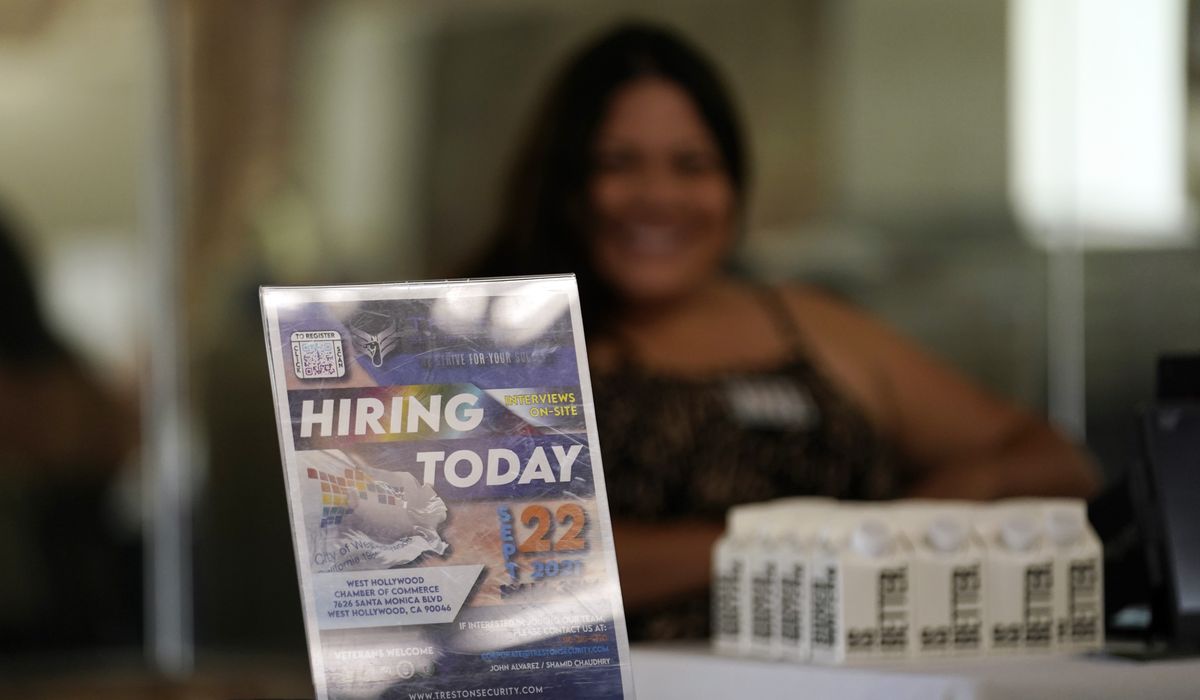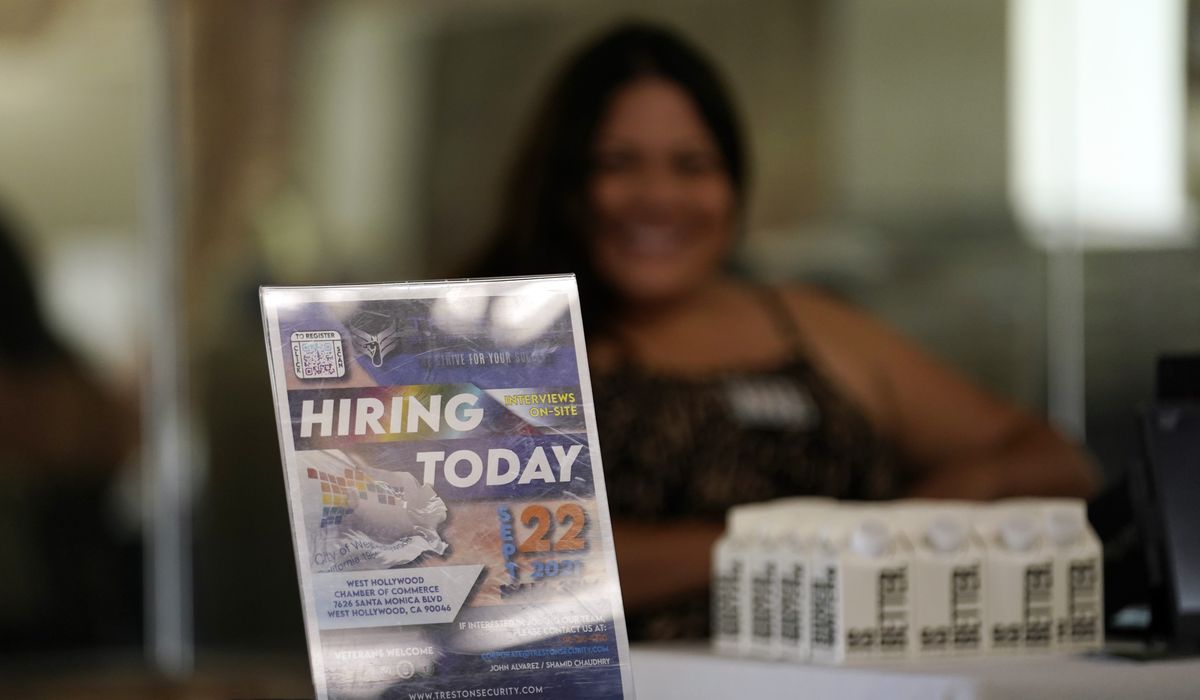
The labor shortage can be seen everywhere.
It’s forcing restaurants to close, schools to cancel classes, upending airline flight schedules and fueling the supply chain breakdown with absent truck drivers.
A scarcity of workers in the U.S. in the wake of the COVID-19 pandemic is causing some employers to raise their wages and others to give employees a greater say in daily operations. But businesses are still struggling to retain workers, and schools nationwide are canceling classes on short notice due to a lack of staff.
Experts say this could last for years.
A record 4.4 million Americans quit their jobs in September, surpassing the previous high set in August. Dealing with the impact of the coronavirus for the past two years has prompted many older workers to opt for early retirement, while others are acquiring new skills to gain higher pay, or moving into jobs that allow them to work remotely.
Although job openings abound, there were 7.4 million people out of work in October. September’s quit rate rose to 3% from its high of 2.9% in August.
Worker burnout is rated as high in various surveys, particularly in fields such as health care that have been hit hard during the pandemic.
In short, the workforce of the so-called “Great Resignation” is undergoing widespread and rapid changes not seen in a generation or more, analysts say.
“It’s one of those occurrences in American society brought on by extraordinary events,” said Robert Bruno, director of the labor education program at the University of Illinois. “I don’t refer to it as a ‘resignation.’ It’s a refusal to accept the conditions that they have been working under.”
Republicans and many business leaders have blamed expanded unemployment benefits during the worst of the pandemic lockdowns for creating a prolonged shortage of people willing to return to work. House Minority Leader Kevin McCarthy, California Republican, said businesses are facing the threat of closure again “primarily from a historic labor shortage, driven by Democrat policies passed earlier this year.”
Democrats reject that argument.
“What we have is a situation in which workers all across this country are saying, ‘You know what? I don’t have to work for starvation wages, I am a human being, I deserve to be treated with dignity,’” tweeted Senate Budget Committee Chairman Bernard Sanders, a democratic socialist from Vermont, on Nov. 17.
The expiration of expanded unemployment programs in September resulted in more than 8 million people no longer receiving any unemployment compensation. Another 2.7 million who receive state unemployment benefits lost the temporary $300 federal additional weekly payment.
A total of 26 states had opted out of expanded federal benefits earlier, citing concerns that the unusually high jobless payments were discouraging people from returning to work.
The hardest hit by resignations in September were the food service (863,000 workers quit) and retail industries (685,000), with quit rates of 6.6% and 4.4%, respectively. The hospitality industry lost 987,000 employees, while 589,000 workers quit in health care.
Nearly 900 school districts around the country have canceled classes abruptly in the past month, blaming staff burnout and other problems that aren’t directly related to COVID-19 outbreaks. The unscheduled days off from school are forcing some parents to scramble again to find options for caring for their children during the workday.
Amid the churn in the workforce, wages are rising, but workers are actually losing ground. Average hourly earnings are up 5.1% this year, but inflation has climbed 6.2% since last October, more than wiping out those gains.
President Biden glossed over the impact of inflation as he cited progress in the recovery.
“Things are getting better for American workers: higher wages, better benefits, more flexible schedules,” the president said.
Many people who’ve quit their jobs during the pandemic are blue-collar workers looking to switch to white-collar positions with better pay and safer working conditions, according to California-based career adviser Kapeesh Saraf.
“Through the pandemic, people have had higher savings because they weren’t spending as much money, plus all the fiscal stimulus from the government gave people some flexibility to do this,” Mr. Saraf said. “A lot of online learning companies are seeing people are looking to re-skill and try to move to white-collar jobs, where you have the ability to work remotely, have flexible hours and a lot more pay.”
The labor turmoil also is prompting employers to get more creative in their efforts to retain workers. Mercedes Austin, CEO of Mercury Mosaics, a Minneapolis-based manufacturer of handmade ceramic tiles, said she has taken steps such as involving more workers in the firm’s strategic planning team.
“I think it’s made a really big difference to have people actually see that they can be a part of building something, and they’re not just arriving as a cog in a wheel,” Ms. Austin said.
During the pandemic, the company also discontinued its in-person showroom, moving its displays of products fully to a digital show.
“I really took advice from my team on our manufacturing crew — we used to have a lot of different types of the general public coming into our space, be it for a showroom or for classes, and we basically created it into a manufacturing bubble,” she said. “People didn’t have to worry about all sorts of strangers coming in and out of the space. So we created a bubble for the team to work, and I think just them knowing they could have a say in that went a really long way.”
About 40% of her staff work remotely. While Ms. Austin said some employees have quit during the past two years, she credits the changes with enabling the company’s workforce to increase from 32 at the start of the pandemic to 53 currently.
Mr. Bruno, the labor scholar, said the resignations are taking place across all demographic groups, including people choosing to retire earlier than they had planned.
“It’s just changed the consciousness of a lot of workers in a fairly uncoordinated, unorganized way,” he said. “They have come to similar conclusions — that they have been working under suboptimal conditions for some time. And this is an effort to reset the balance.”








